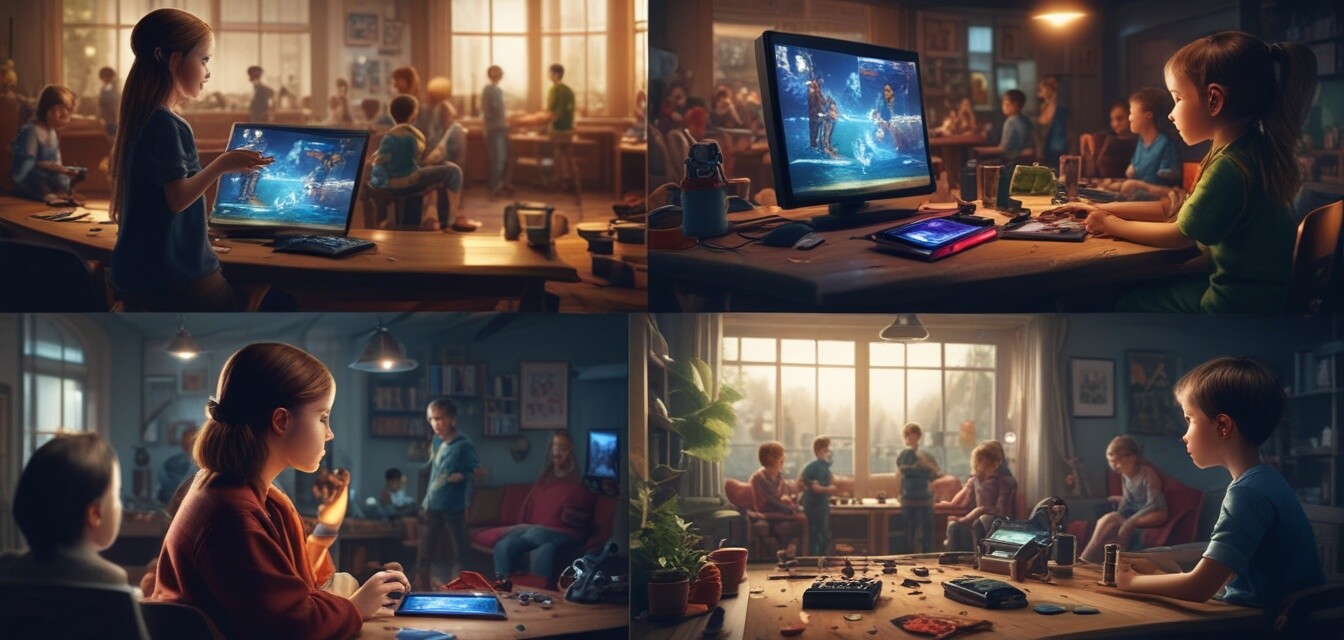
Educational vs. Traditional Gaming: Making the Right Choice
Key Takeaways
- Educational games provide learning opportunities while keeping kids engaged.
- Traditional gaming often focuses on entertainment and competition.
- Age-appropriateness varies between educational and traditional games.
- Balancing both types of gaming can offer a well-rounded experience for children.
- Parental guidance is essential in selecting suitable games from both categories.
Choosing between educational gaming and traditional gaming can be a tough decision for parents. With so many options available, understanding the differences, benefits, and drawbacks is essential to make an informed choice. In this article, we will explore both types of gaming experiences for kids, looking at their unique features, suitable age ranges, and overall impacts on children's growth and development.
Understanding educational gaming
Educational games are designed with the intent to teach, promote critical thinking, and provide cognitive benefits. These games often blend fun with learning, making it easier for children to absorb new concepts while enjoying their playtime. Here, we break down some key characteristics of educational gaming.
- Learning-focused: These games aim to educate children on various subjects such as math, science, language, and art.
- Interactive elements: Many educational games incorporate interactive elements that enhance engagement and retention.
- Age-appropriate content: Most educational games are tailored to specific age groups to ensure age-appropriate learning.
Benefits of educational gaming
Some notable advantages of educational games include:
| Benefit | Description |
|---|---|
| Enhanced Learning | Educational games can improve skills in reading, arithmetic, and problem-solving while also making learning fun. |
| Critical Thinking | These games often require kids to analyze situations and think critically to progress, which is essential for cognitive development. |
| Social Skills | Multiplayer educational games encourage teamwork, collaboration, and communication among peers. |
Drawbacks of educational gaming
While educational gaming has its benefits, there are also some drawbacks to consider:
Pros
- Encourages a love for learning.
- Boosts concentration and focus in children.
- Allows for personalized learning experiences.
Cons
- Not all educational games are engaging or fun.
- Some may prioritize educational content over gameplay enjoyment.
Exploring traditional gaming
Traditional gaming, typically characterized by various video games played on consoles or computers, emphasizes entertainment and leisure. In this section, we delve into what makes traditional gaming appealing to children.
- Entertainment value: These games are primarily focused on providing enjoyable and engaging experiences.
- Variety of genres: Traditional games cover a wide range of categories, including action, adventure, sports, and simulation.
- Social interaction: Multiplayer modes foster friendships and social interactions among players.
Benefits of traditional gaming
Some advantages of traditional gaming include:
| Benefit | Description |
|---|---|
| Stress Relief | Playing games can be a great way to relieve stress and unwind after a long day. |
| Creativity | Many games encourage creativity through storytelling, character creation, and imaginative scenarios. |
| Hand-Eye Coordination | Playing video games can improve fine motor skills, especially in fast-paced genres. |
Drawbacks of traditional gaming
However, traditional gaming has its downsides as well:
Pros
- Presents thrilling challenges and skills development.
- Encourages teamwork through multiplayer functionality.
- A wide variety of genres caters to different interests.
Cons
- Poor time management can lead to excessive gaming.
- May foster addiction in some children.
- Not every game is suitable for all ages.
Which option is best for your child?
The decision between educational and traditional gaming ultimately depends on the preferences of your child and what you aim to gain from their gaming experience. It's also important to consider appropriate age ranges for both categories. Generally:
| Type of Gaming | Recommended Age Group |
|---|---|
| Educational Gaming | 3-12 years |
| Traditional Gaming | 6+ years (depending on the game) |
Final thoughts
In conclusion, both educational and traditional gaming offer unique benefits and drawbacks. Emphasizing one over the other may not be the best choice; instead, consider incorporating a balance of both types into your child’s gaming routine. By doing so, you can promote learning while also ensuring that your child enjoys their playtime. To explore more options, check our Kids' Educational Electronics and Plug & Play Gaming Systems categories for the best resources available.